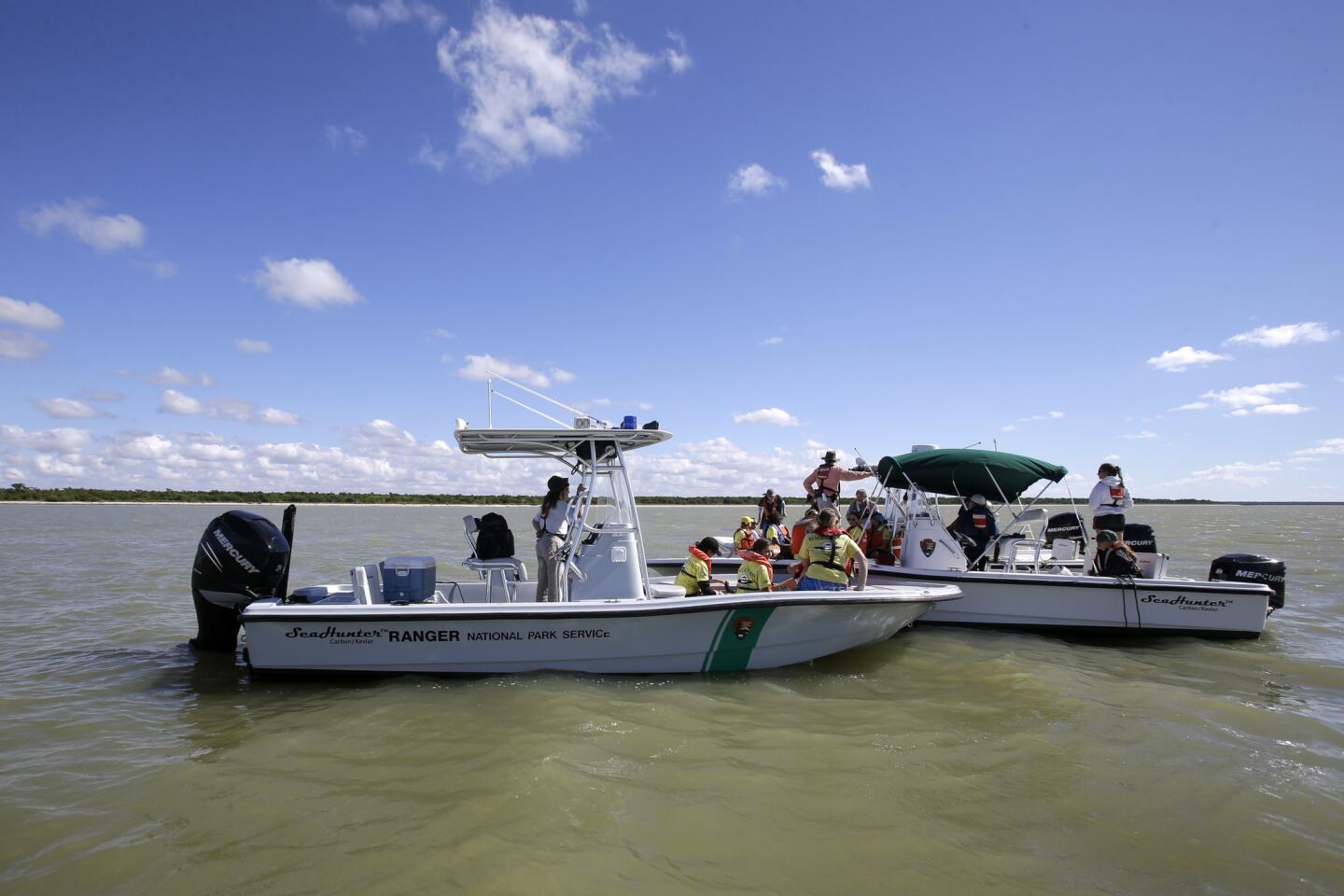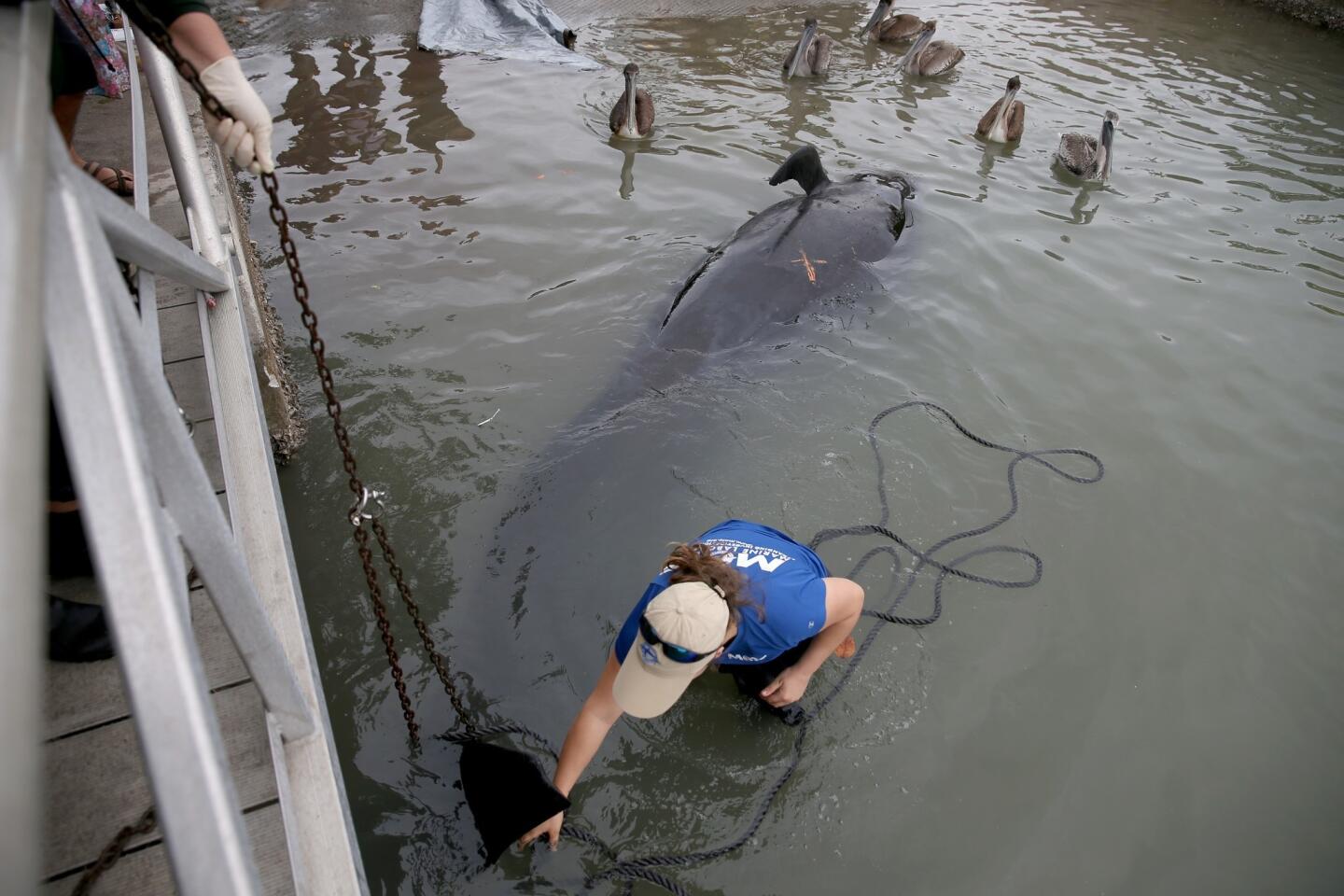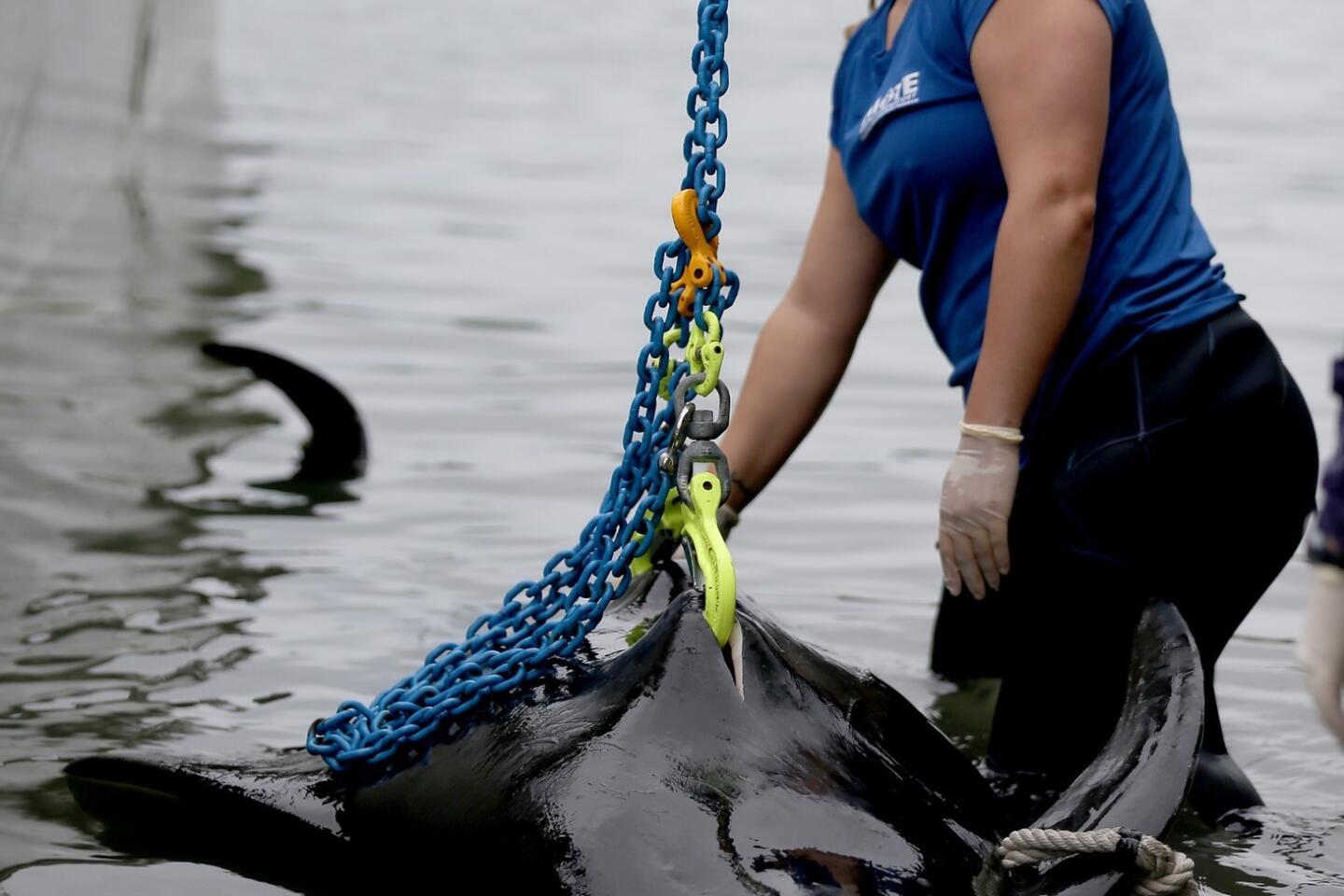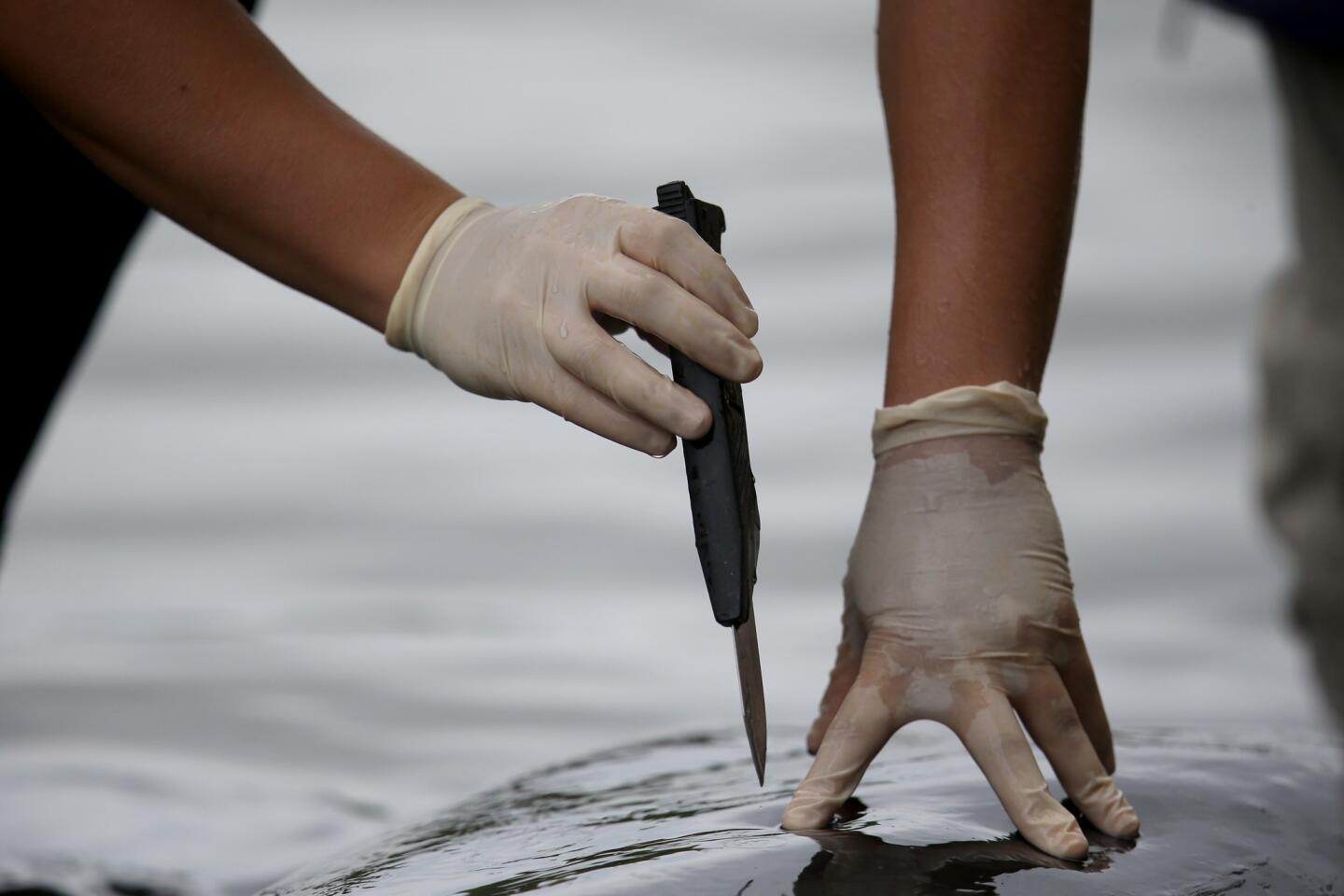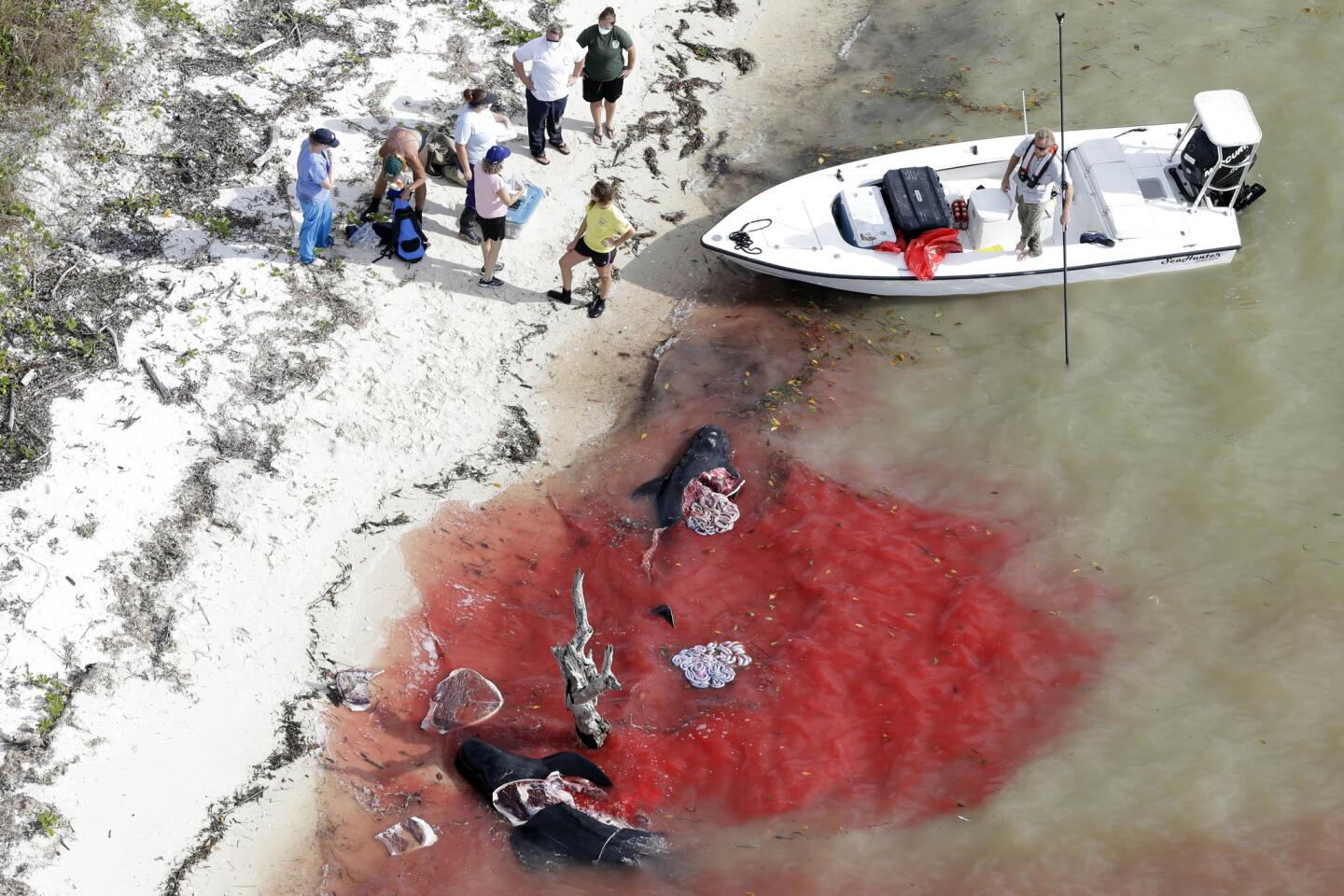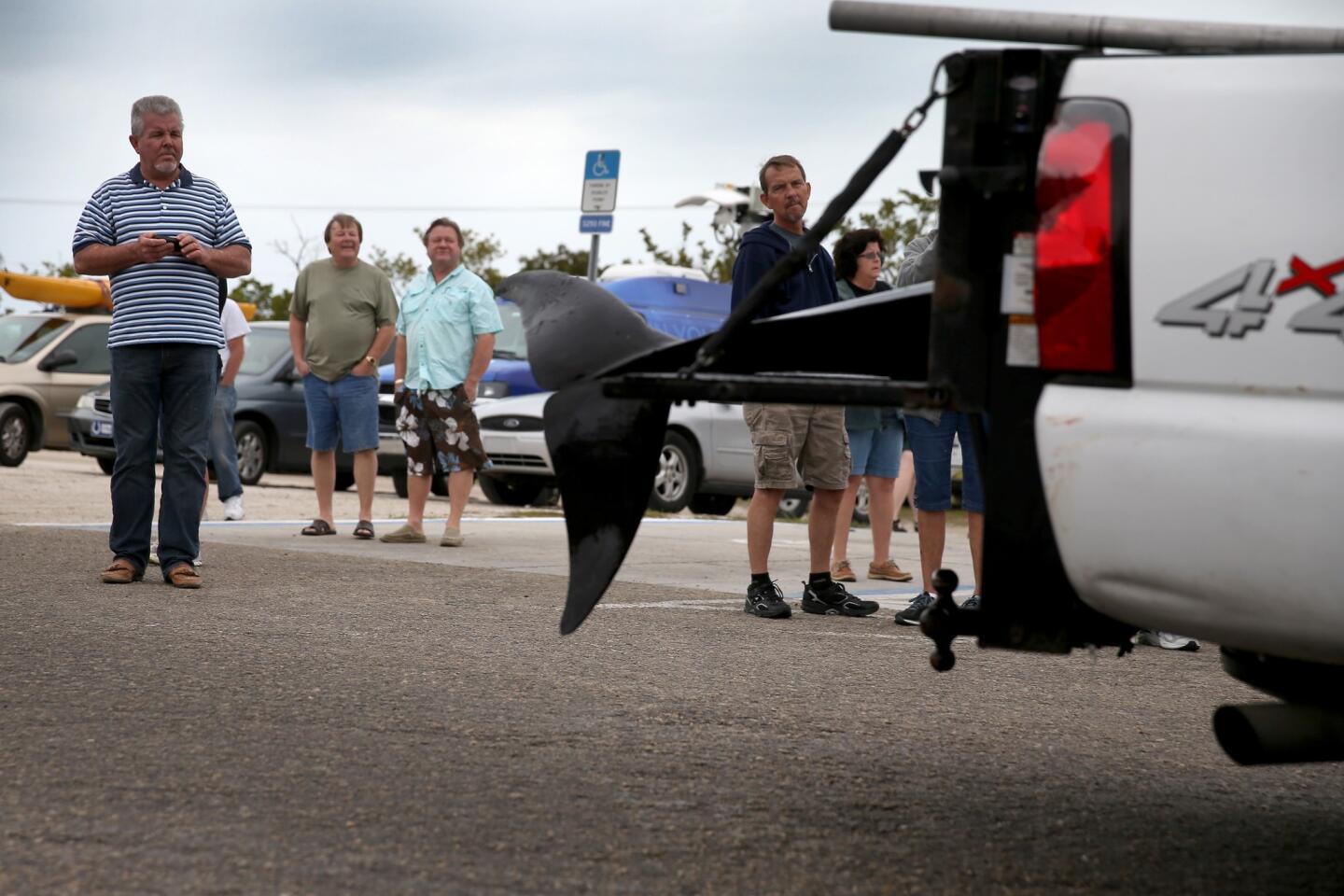25 dead pilot whales found off Florida: 5 things to help understand it
- Share via
Officials at the National Oceanic and Atmospheric Administration found 25 dead pilot whales off Kice Island, Fla., on Thursday, adding to the state’s high whale death toll.
Although Blair Mase, NOAA stranding coordinator, said such incidents “come in spurts,” the number of pilot whale strandings in the last year is higher than usual.
“It’s unusual and something we are looking at,” Mase told reporters on Thursday.
The 25 dead mammals -- 16 females and nine males -- were discovered just two days after eight other pilot whales were found dead about 40 miles north of Kice Island in Lovers Key.
In December, 51 pilot whales were stranded in the Florida Everglades. Eleven died after beaching themselves in the Everglades and 11 others died in the Florida Keys, about 70 miles away. Mase said it can take weeks, if not months, to determine the cause of death for these whales.
Here are five things you should know about the recent strandings:
- The 25 reported dead pilot whales came in on “high seas.” Spotted by boaters in the area, Mase said a major cold snap and high seas pushed the whales ashore. Initially, NOAA had reported 23 deaths but later took to its Twitter account to confirm the two others.
NOAA team members plan to perform necropsies on the 25 deceased whales on Friday. “We had our biologist from Florida Fish and Wildlife Conservation Commission head out” today, Mase said. “She had suspected they had been there for about 24 hours.”
Necropsies on Tuesday’s eight whales showed they all had “empty stomachs.” Mase said that when the whales were sighted Sunday, they were not in the best shape. “I think if they were not stranded in this location, they would have stranded somewhere else just because of the way their behavior was. ... A lot of them were underweight, they looked thin ... and had been out of their normal range for quite a while.” The whales in the Everglades also had empty stomachs.
Sonar is being looked at as a potential contributing factor. In December, Mase told reporters that the U.S. Navy had not been sending out sonar “pings” in the area, which can affect marine wildlife. Some studies have loosely connected sonic disturbances to pilot whale strandings, according to the IUCN Red List of Threatened Species. The pilot whale is not considered endangered. In this case, Mase said NOAA was still waiting to hear back from Navy officials as to whether sonar could have contributed to the 25 pilot whale deaths Thursday.
Pilot whales are the most common species that mass-strands in Florida. According to NOAA, the whales, which can weigh more than 6,000 pounds and grow to be 24 feet long, have a close-knit social structure that can cause them to follow sick or lost members of their pod and then resist leaving those animals. Pilot whales usually travel in groups of 30 to 50, Mase said.
ALSO:
What would it take for Justin Bieber to get deported?
Man convicted in 1991 killings of 9 people, 6 of them Buddhist monks
Alert lifted at Columbine High School, area schools; students go home
Twitter: @saba_h
More to Read
Sign up for Essential California
The most important California stories and recommendations in your inbox every morning.
You may occasionally receive promotional content from the Los Angeles Times.

